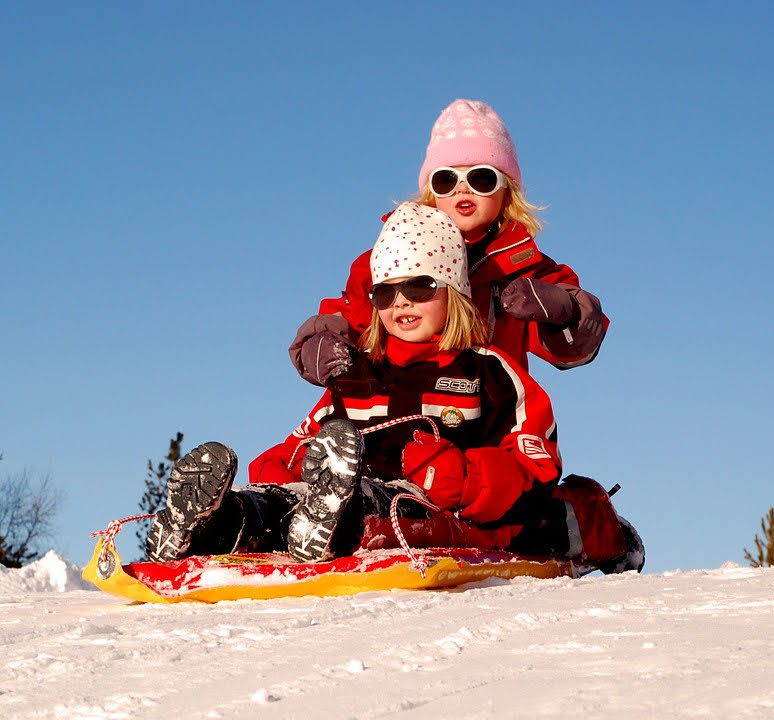
Today we are going to be discussing the hazards of 3 popular winter sports.
If you or your children have decided to try a new winter sport this year, then you are likely looking forward to learning a new skill while engaging in healthy exercise and having fun. However, you should learn about the potential dangers of the winter sport you plan to participate in, so you can take steps to avoid these hazards and the neck injuries they can cause.
Read on to learn about the most common injuries suffered by participants of three popular winter sports as well as how to avoid them, if possible.
Skiing And Snowboarding
Spending a day on the slopes at a ski resort can be a fun and exhilarating experience for both novice and experienced skiers and snowboarders. However, participation in either sport comes with the risk of injury.
About 25 percent of all non-fatal outdoor injuries requiring emergency care occur when snowboarding. In addition, a large percentage of these injuries are traumatic brain injuries (TBIs).
While skiing is typically safer than snowboarding, serious injuries can occur when skiing. About 36 percent of all skiing injuries are knee-related, while a small number of more serious skiing accidents that involve high-speed collisions with objects can lead to death.
To decrease the risk of serious injury when skiing or snowboarding, do not attempt to perform tricks and stunts when on the slopes; a recent increase in serious skiing and snowboarding injuries is believed to be caused by growing engagement in this type of risky behavior. Moreover, always wear a helmet when skiing or snowboarding for protection against TBIs.
Wrist guards can help prevent wrist injuries while you snowboard, and modern ski bindings, called release bindings, help prevent ankle and leg injuries more effectively than older, non-release bindings.
Unfortunately, you cannot always prevent skiing and snowboarding injuries that occur due to the negligence of others. You could also become injured on the slopes if a reckless skier or snowboarder runs into you, you fall on a poorly maintained ski slope, or the ski lift malfunctions due to lack of maintenance or proper inspection before use. These kinds of injuries are best handled with a snow sport personal injury lawyer.
Sledding
Sledding is another popular winter sport that can be especially fun for children who are too young to ski. However, unfortunately, many people sustain sledding injuries.
According to the Center for Injury Research and Policy, between the years 2008 and 2017, about 220,488 people visited the emergency room to treat an injury that occurred while sledding and a large percentage of these injuries were head-related. The most common causes of sledding injuries are collisions with stationary objects or other sledders as well as falls from sleds.
To keep your children safe as they sled, always ensure they wear helmets. This one piece of safety equipment can help prevent many types of head injuries. In addition, provide your children with sleds equipped with a steering feature that can help them steer away from obstacles when necessary to prevent collisions.
Finally, choose where you allow your children to sled. To stay safe, only allow them to sled at sled parks, and never allow them to sled on hills near streets and driveways where they could run into moving vehicles.
Just like accidents that occur when skiing and snowboarding, not all sledding accidents can be prevented, especially when they are the result of others’ negligence. Ill-maintained or badly designed sled parks, other sledders engaging in reckless behaviors, and poorly designed sleds can all also contribute to sledding accidents. Again, these situations warrant a personal injury suit.
Ice Skating
While many people consider ice skating to be much safer than some other winter sports, injuries can still occur. The most common causes of ice skating injuries are simple falls on slippery ice.
Fortunately, only about 0.5 percent of all ice skating injuries result in head trauma. However, skaters that attempt to block their falls onto the ice with their hands can fracture their wrists or, less commonly, their elbows when they fall.
To help prevent wrist trauma when falling, wear wrist protectors every time you skate. In addition, choose well-fitting figure skates and lace them to help prevent many types of injuries. Tightly laced skates stabilize the ankles to both help prevent falls and protect the ankles when you do fall. Finally, don’t stick out your arms when you sense a fall and instead allow yourself to fall on your glute muscles.
Even when following these guidelines, injuries can occur when ice skating due to others’ negligence. Children and even adults can run into others and knock them down when skating recklessly, and run-ins with cracks and pits on neglected rinks can lead to falls and injuries they can cause. If you are injured for one of these reasons, consider working with a snow sport personal injury attorney.
Working With A Snow Sport Injury Lawyer
If you or your children have decided to engage in one or more new winter sports, then you should be aware of the dangers of your new sport and its prevention. If you were injured due to the negligence of another person or a business when participating in a winter sport, then contact the experienced snow sport personal injury attorneys at Cantor Injury Law for expert legal representation today.
After reading our post we hope that you know more about the hazards of these 3 popular winter sports. If you have any questions or concerns please contact Cantor Injury Law in St. Louis today.


